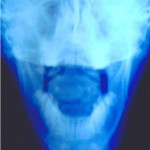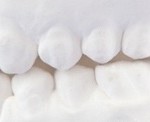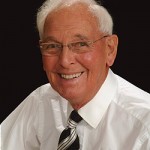Airway disorders—especially Obstructive Sleep Apnea (OSA)—are increasingly of interest to the dental profession. The use of an oral orthotic of is now accepted as a possible alternative to continuous positive airway pressure (CPAP) in which a mask encloses the nose and mouth and forced-air is used to maintain breathing. From a patient’s viewpoint, an intraoral appliance is less cumbersome, less … [Read more...]
Facing Forward: Possible Links Between Strabismus and the Mouth
Case history shared with kind permission of the patient. A 14-year-old patient came into my office to wait while his sister was being treated (Fig 1 a, b). His mother was aware of my interest in posture and suggested that I might look at Mike. Clearly, there were postural problems. An examination of the face and dentition (Fig 2 a, b) showed an Angle Class 1 occlusion, but neither the family … [Read more...]
Facing Forward: Occlusal Wear as a Diagnostic Indicator
The Articulator as Standard Protocol for Orthodontic Diagnosis In the orthodontic world, occlusal wear patterns on teeth are often a secondary consideration. In fact, they are valuable clues as to what is happening in the mouth. Consider the models in Figs 1a and 1b. They are of a 25-year-old patient with a well- aligned Angle class 1 dentition following two years of … [Read more...]
Facing Forward: The Case of the Maxillary Prosthesis
With permission from Dr. Maribel Vann This 49-year-old patient is an interesting example of what can happen when a rigid connection is made between the two halves of the maxilla. About 20 years before she was first seen by Dr. Vann she was involved in an automobile accident in which she lost all four maxillary incisors. These were eventually replaced with a fixed prosthesis anchored on the … [Read more...]
Orthodontics in the 21st Century. What the schools won’t tell you (yet).
The following is an announcement distributed by the Raphael Center for Integrative Education about a seminar I will be delivering in New Jersey in November. Dr. Gavin James - Sat. November 14, 2015 Dr. Michael Mew - Sun. November 15, 2015 Are you frustrated by the direction you see the profession of orthodontics going in? Even the specialists are beginning to think there is something wrong. … [Read more...]




